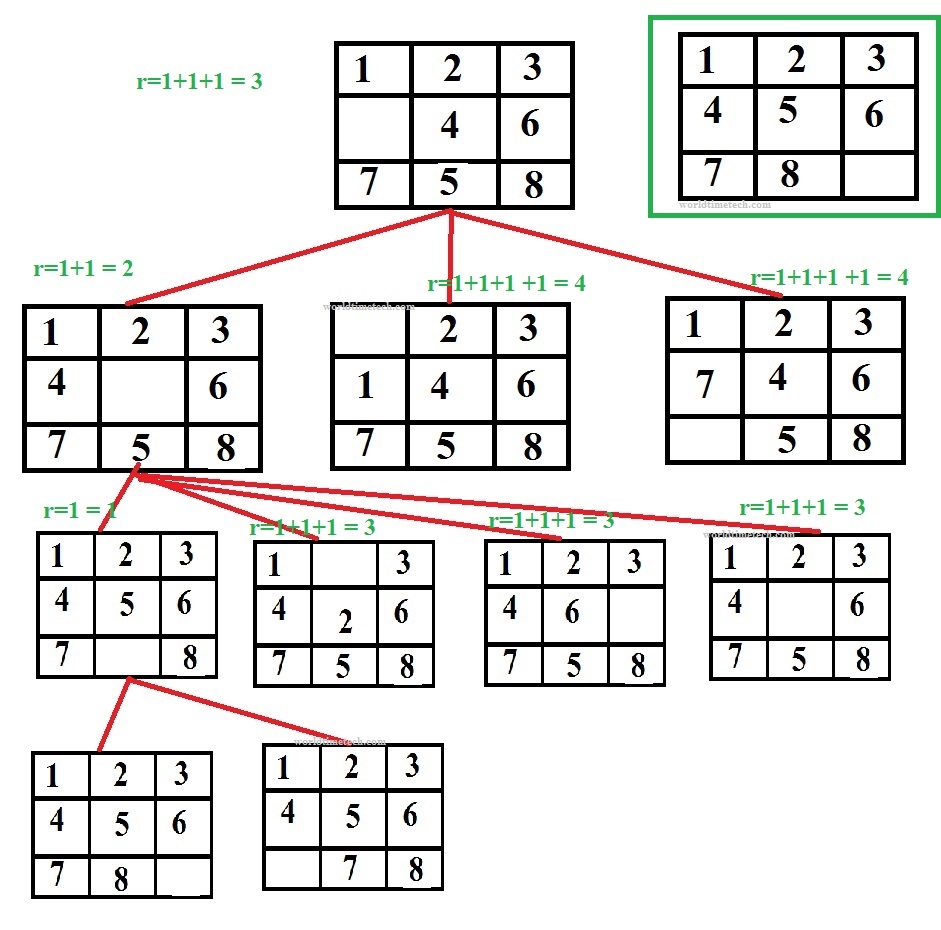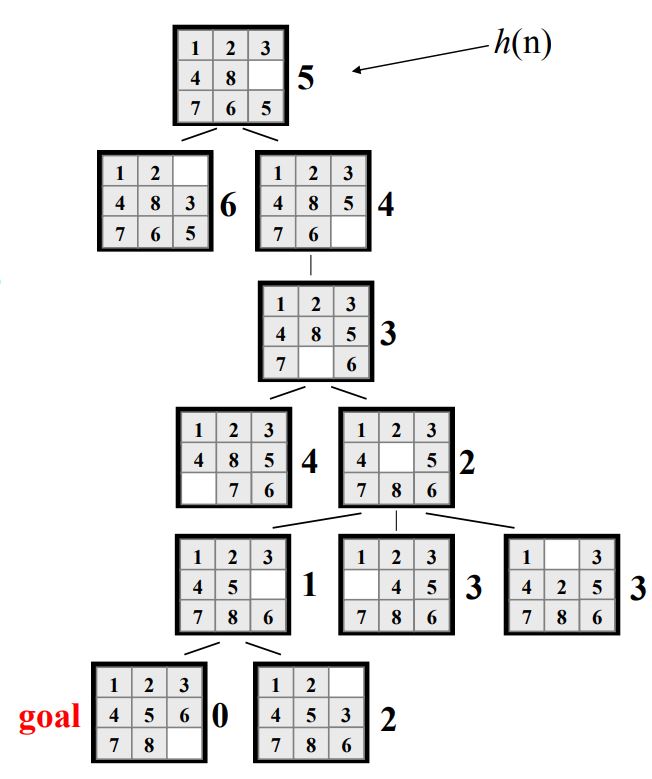31 Oct, 2023
Heuristics with 8 puzzle Algorithms in AI
Informed search algorithms use heuristics to make informed decisions about which paths to explore in a search space. Heuristics provide the algorithm with a sense of direction, helping it focus on the most promising options while avoiding less likely ones. In essence, heuristics are a key component of informed search algorithms, as they provide the information needed to guide the search efficiently toward a solution. Informed search combines these heuristic estimates with the cost of reaching a state to make decisions about which states to explore next. The use of heuristics in informed search can significantly improve search efficiency in various problem-solving scenarios.
Heuristics are like smart shortcuts for solving problems. They're quick, simple, and sometimes imperfect strategies that help you make decisions or find solutions faster, even if they don't guarantee the absolute best outcome. Think of them as practical rules of thumb to make your life easier.
Advantages of Heuristics (Informed Search):
- Speed: Heuristics help search quickly.
- Best Solution: Good heuristics find the best answer.
- Less Memory: Heuristics use less computer memory.
Disadvantages of Heuristics (Informed Search):
- Hard to Make: Making good heuristics is tough.
- Complex: Using heuristics in a program can be complicated.
- Specialized: Heuristics work best for specific problems.
The 8-puzzle heuristic algorithm is used in:
- Puzzle Solvers: Solving puzzles like the 8-puzzle, 15-puzzle, and similar sliding tile puzzles.
- Game AI: In video games, AI characters can use heuristics to find efficient paths in a game world.
- Route Planning: Heuristics are applied to find optimal routes in navigation and logistics.
- Optimization Problems: It helps find solutions to various optimization problems with discrete state spaces.
- Look at the numbers: Start with the puzzle layout and think about where each number should be, aiming for the correct order.
- Count moves: For each number, figure out how many moves it is away from the right spot (ignore diagonal moves).
- Add them up: Sum the moves for all the numbers. This is your "score" or estimate of how far you are from the solution.
- Choose the best move: Pick the move that lowers your score (moves numbers closer to where they belong).
- Repeat: Keep doing this until your score is zero (you've solved it) or until you can't make any better moves.
Difference between Informed and Uninformed Search in AI
Informed Search (Heuristic Search):
- Uses hints (heuristics) to find the solution faster.
- Quickly narrows down options but may not always find the best answer.
- Uses domain-specific information (heuristics).
- More efficient, guided search.
- Not always complete, but can be optimal (finds best solution).
- Example: A* search.
Uninformed Search:
- Explores without hints; it doesn't know the goal location.
- It checks every possible path but may take more time.
- No domain-specific guidance.
- Less efficient, exhaustive search.
- Typically complete (finds a solution if it exists).
- Examples: Breadth-First Search, Depth-First Search.
Example
8-puzzle heuristic algorithm problem:

